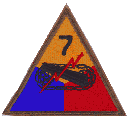

|
This web page contains German accounts. Two things to keep in mind: (1) the "enemy" referred to in the text are the Americans, (2) the Germans referred to the bridgehead as the Ancy Bridgehead and not the Dornot Bridgehead. |
|
Defense of Metz, 1-8 September 1944 Transcription - Images This German account of the first days of the defense of Metz was found by American troops when Metz was finally taken (22 Nov 1944). It documents the Fahnenjunkerschule VI (Officer Candidate School or OCS) personnel's actions. The fact that they wrote a document of almost 40 pages while the battle was still going on for 2.5 months shows that the Germans felt secure enough in Metz during the battle to use resources documenting the battle while it was happening. While the report title covers only 1-8 September, the reality is that the report includes actions through 12 September, thus including the entire Dornot Bridgehead period. In fact, the last page includes a status report of Fort Driant on 24 September. So, the report appears to have been written in late September 1944. Here is the American introduction to the document: "Upon the reduction of Metz, various documents and reports were found by the CIC in the Gestapo Headquarters in Metz, which also served as the CP of the 462nd Infantry Division of the German First Army. The following is a translation by 1st Lt Walter Haag and M/Sgt J. Haftbillig of the German Order of Battle Detachment attached to XX Corps." It appears that what the Americans called the Dornot Bridgehead was referred to by the Germans as the Ancy Bridgehead. Ancy is immediately north of Dornot and almost adjacent to Dornot.
|
|
Defense of Metz Soon after VE Day, the U. S. Army began interviewing the surviving German commanders or having them write their accounts of actions they led, creating a series of Foreign Military Studies. One series of interviews was called ETHINT, a contraction of European Theater Interrogations. ETHINT-32 is the 20 July 1945 interview of General Johannes Blaskowitz about the defense of Metz, which he commanded during the Dornot Bridgehead. He provided no specifics about the Dornot Bridgehead, but his big picture view is important context and directly addresses some beliefs the U. S. troops had developed about the defense of Metz. So, I include the full transcription here. This transcription was from a copy in the U. S. National Archives Record Group 407 (Adjutant General's Office) WWII Miscellaneous Files in which it is labeled ML-7.
|
|
by Hans Stöber, translated by Klaus Scharley (2019; J. J. Fedorowicz Publishing, Inc.; Winnipeg, Manitoba, Canada) This published account includes contextual information by the author as well as transcripts of various original records. Note that while the English translation is dated 2019, the original German text preface by the author was written in 1984. Chapter 3 "Dornot Bridgehead" is on pages 14-35. In the following, the transcripts are in italics while the author's text is in bold. Since the author's text is under copyright only brief segments are included. In particular, the very useful map on page 16 is not included here, so that I reference it only in descriptive text of my own. The information extracted is chosen for the potential value that it provides for the impact on the American troops since these web pages are focused on finding and identifying the remains of those American troops not yet recovered and identified. The book provides a great deal more information about the German troops than is included here. As these are German records, all references to "the enemy" are references to the American troops. While all the original document text in the book is clearly set in either shaded boxes or in boxes defined by an outline, the exact source of the text is not always clear. I have tried to identify the source of the original text in each case, but I cannot be sure that I have done so correctly.
|
Active overview of all pages at the 7th Armored Division web site